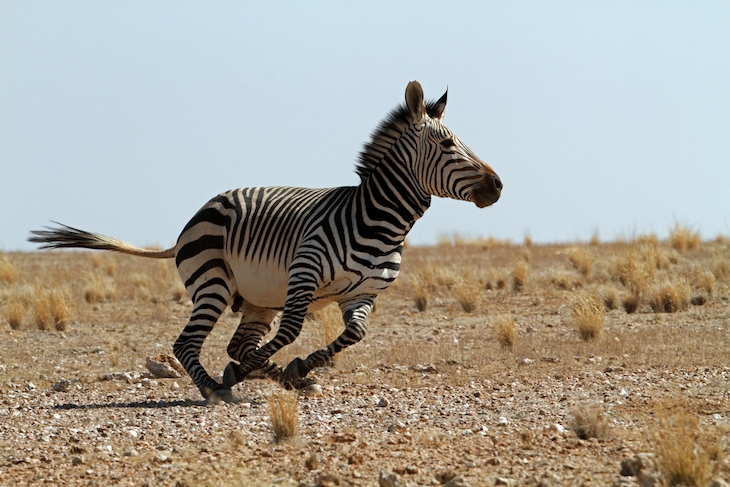Laikipia, Kenya
The zebra lacks a rumen and eats at least twice as much as a cow. On our modest Kenyan ranch we run several hundred head of Boran cattle. In our arid conditions, this number is carefully calculated on a stocking rate of so many beasts to the acre. If you add hundreds of zebra to the pasture you swiftly finish your grass. During this year’s drought, and the chaos beyond our boundaries, wild animals were poached and they starved. Many arrived on the farm so desperate that they smashed through walls and fences to get in to where it was safe. I let them stay. The elephants came and went as they pleased, barging through any barrier. Huge dewlapped eland, oryx with heads like African dance masks, alien-headed hartebeest, Grant’s gazelles and Tommies with their dressage trot — even the common zebra’s cousin, the Grévy’s, with its Mickey Mouse ears and rocking-horse body. They all jumped over fences both ways. But the common zebra entered through breaks in the fences and then they never left. They bit pastures down short and this helped them see predators, so they liked that even more. Then they started dropping foals. The farm became like a vast fish trap with zebras swarming in. I am trying to grow fodder and it is maddening to see a herd of zebra devouring short green shoots on a newly planted field of Boma Rhodes grass. Last week I walked among herds on our plains, hundreds of zebra wheeling around me like cavalry, with thundering hooves stamping up clouds of dust. The air echoed with stallions braying after their harems of mares as they moved off in choreographed waves. Here were some of the last big herds of wild mammals in the world — not in Francis Parkman Jr’s Wild West of the 1840s, with the Sioux and the buffalo, but now, on the eve of 2018.
You might disagree with half of it, but you’ll enjoy reading all of it
TRY 3 MONTHS FOR $5
Our magazine articles are for subscribers only. Start your 3-month trial today for just $5 and subscribe to more than one view
Already a subscriber? Log in







Comments
Join the debate for just £1 a month
Be part of the conversation with other Spectator readers by getting your first three months for £3.
UNLOCK ACCESS Just £1 a monthAlready a subscriber? Log in